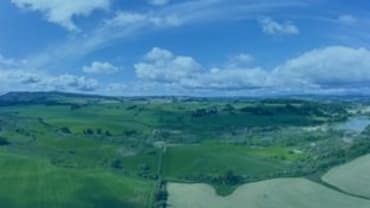The Scottish Government has given Registers of Scotland until 2019 to map and register all publicly owned land in Scotland and until 2024 to register all land in Scotland. The Land Registration (Scotland) Act 2012, which came into force on 8 December 2014, provides a statutory framework for the completion of the land register. Now that we are a few years into this new era of land registration, we reflect on experiences to date.
Brief recap on Land Registration
The Land Register is a map-based system which gives Scottish property owners a title sheet that includes an Ordnance Survey map clearly showing the extent of ownership. The title sheets also provide clear details as to the registered owner, the price, standard securities (mortgages) and conditions and rights which affect the property (for example, formal rights of access to the property). Where the title to a property is not yet registered in the Land Register of Scotland it will remain in the old public land register, the General Register of Sasine (known as the Sasine Register). The Sasine Register is a chronological list of land deeds, and properties are often described by written descriptions or by reference to poor quality plans.
The Sasine Register is gradually being replaced by the map-based Land Register and, although the Land Register was first introduced in parts of Scotland in 1981, there are still vast areas of land which remain on the old Sasine Register. Before the changes implemented by the 2012 Act, it was only the sale of a property for a consideration which would induce registration in the Land Register. However, in order to increase the number of properties being registered in the Land Register of Scotland (with a view to achieving the target dates), the events which require the title to a property to be registered in the Land Register have been increased. The events which will now trigger land registration are:-
- Any transfer of land (whether or not any price is paid) including a gift to a family member or the transfer of land after death to beneficiaries under a will.
- The grant of a lease for more than 20 years, such as a lease for a wind farm, lease of a building or lease of farm land. Only those parts of your property affected by the lease will be registered.
- The grant of a new mortgage or security.
A title which is registered in the Land Register of Scotland is generally more concise and it has the benefit of a clear title plan showing the extent of the property _ which should simplify future dealings with the property. Where boundaries between neighbouring properties are uncertain, and neither property is registered, it can be useful to be the first property on the register. This is because it can often mitigate the risk of encroachments by neighbouring owners. If your neighbour obtains a registered title first, and their title includes land which you consider belongs to you, once that land is sold on to a third party it will be extremely difficult to have the title amended (unless you can show there has been fraud or negligence).
The Keeper of the Registers of Scotland is encouraging landowners to voluntarily register their property in the Land Register. The Keeper of Registers of Scotland also has the power to register land without the owner's consent _ this is known as "Keeper induced" registration. If this occurs, there is no registration fee payable but you will only be notified by Registers of Scotland after your title has been registered. You will not be sent a notice in advance. If this happens, it would be prudent to ask your solicitor to check that the title has been registered accurately since there is a risk that the registered title will contain errors.
For more background on land registration, read our Q&A guide.
Plans
In our experience to date, the most challenging aspect of registering a property in the land register for the first time has, in most cases, been the preparation of a plan which is acceptable to Registers of Scotland and which accurately shows the extent of the property. The new title plan must delineate the legal extent _ which does not always coincide with the logical or occupied extent! An owner may expect to own the boundary fence but in fact the fence might not be erected on the legal boundary, meaning that a landowner can own more or less than they are occupying.
Since the titles which are recorded in the Sasine Register often include poor quality plans with a lack of features shown on them _ or, worse still, no plans at all _ it can be difficult for the mapping companies to transpose the title onto a modern OS based map. As the Sasine Register is a chronological list of land deeds, establishing what the extent of title is can often involve mapping an original title plan and then removing a number of other titles which were subsequently transferred out of that title (i.e. sold to a third party), in order to establish what remains within that title. While the boundary of a property may look simple on a lower quality plan, it can be trickier to determine when looking at a more detailed plan (for example, determining whether the boundary is the wall or the ditch that runs parallel to the wall). The preparation of plans, particularly for more complex properties, requires a detailed examination by those preparing the plans, solicitors, agents and clients _ and the process can prove to be very time-consuming.
Once the applicants are happy with the plan, a plans report is ordered (unless the plan has been prepared by Registers of Scotland's plan assistance service, in which case a plans report is not necessary). A plans report will confirm whether the plan is acceptable to Registers and compare it with the title plans for those properties which are already registered in the Land Register to check for any overlaps. There have been some difficulties with plans reports and, even after receiving a clear plans report before the application is submitted for registration, plans can be rejected by Registers of Scotland at a later stage.
Timescales
While simple applications (i.e. small plots of land or houses) are being registered fairly quickly, more complicated applications (i.e. estates and farms) are taking around 14 months from the date the application is submitted to the new title sheet being issued.
Costs
The registration dues which must be paid when first registration is triggered by a transfer of ownership remain unchanged by the 2012 Act. When an application to voluntarily register a property is submitted, the applicant must still pay registration dues although they are slightly discounted. The costs vary according to the value of the property (the table of registration dues can be found here)but registration can prove expensive for landowners.
However, when the voluntary registration of property is triggered by the granting of a standard security the registration dues are only £60 for the registration of the standard security. This is a significant saving on outlays which would otherwise be incurred for a voluntary registration, so the reduced cost of first registration can be considered as an added benefit of granting a standard security. On the other hand,in some cases, it can be viewed as a downside as the need to voluntarily register the underlying title involves additional legal work and a new plan. This will likely generate more costs and take longer than granting a standard security over a title which is in the Sasine Register would have done previously.
The submitting solicitor needs to carry out a comprehensive title examination in order to submit the application as the submitting agent must certify the title to Registers of Scotland. In addition to certifying the extent of the title, they must also detail what servitudes the property benefits from and what burden deeds need to be narrated on the title sheet. Depending upon the nature of the title, this can be a complex process.
Although it may seem like a complex process to register property in the Land Register of Scotland for the first time, it is worth considering the benefits with regard to your own property. Voluntarily registering your property allows you to manage the timescales for submitting the application for registration and ensures that you have sufficient time to check your boundaries prior to registration. If you would like to discuss the possibility of registering your property, please feel free to contact one of Brodies' land and rural business team.











